
Where We Be
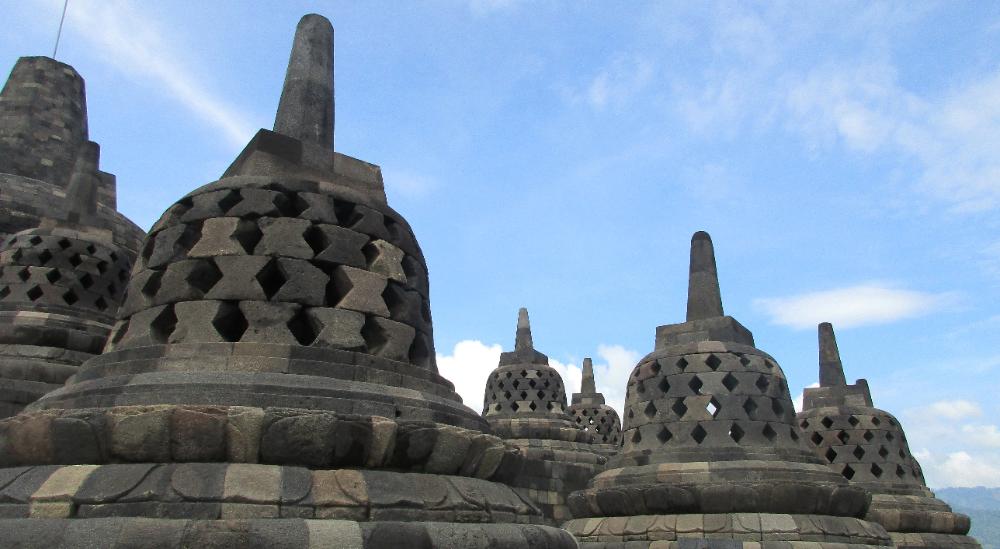
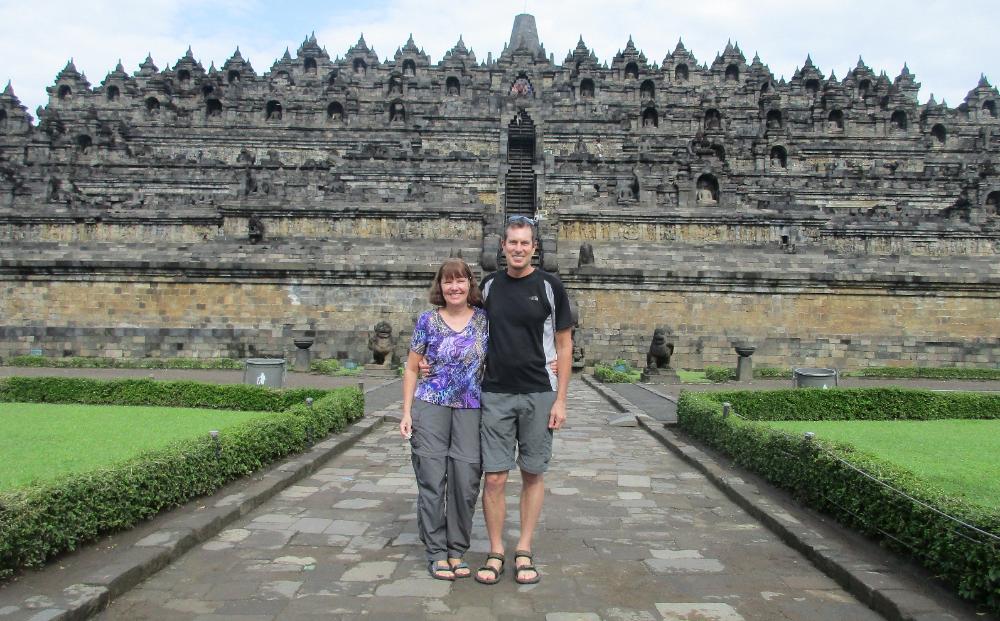
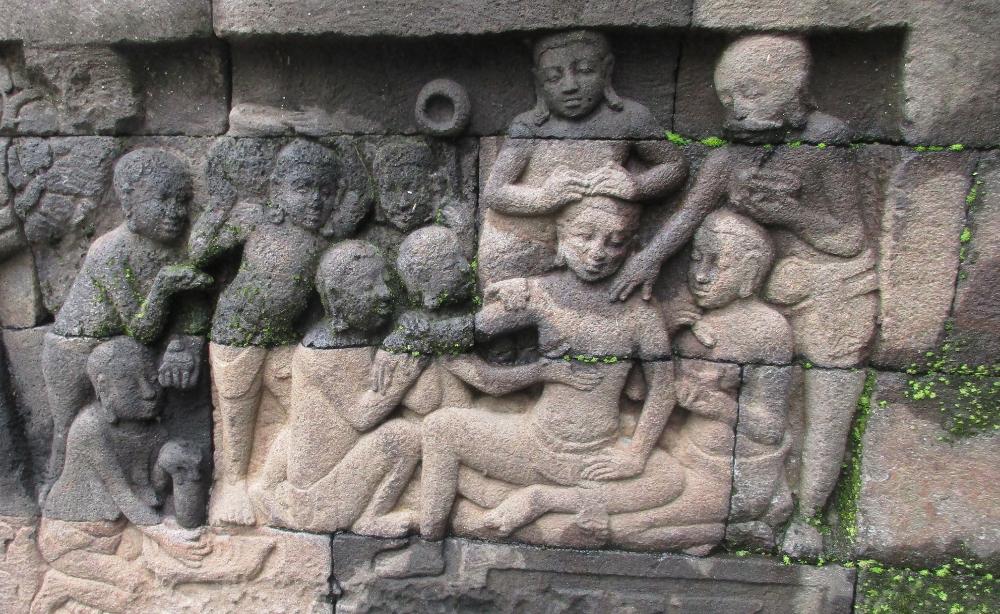
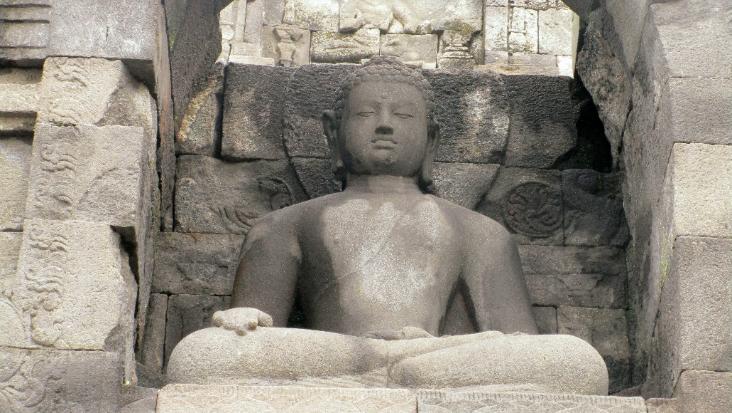
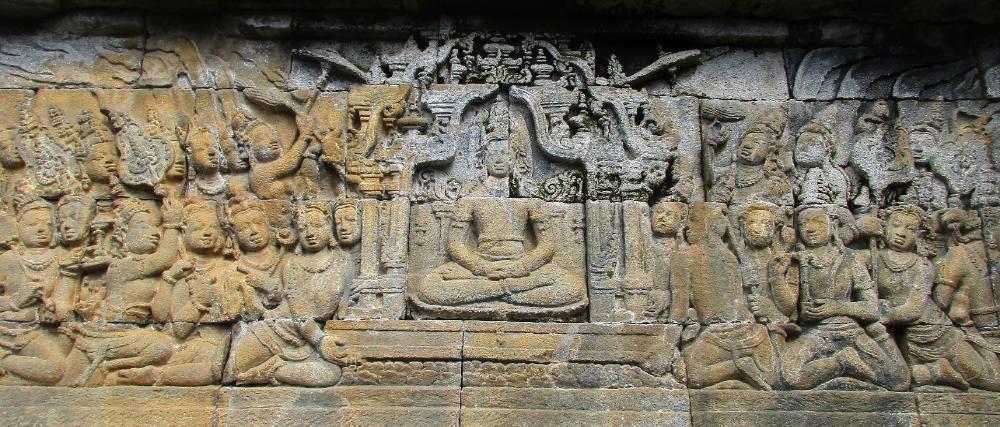
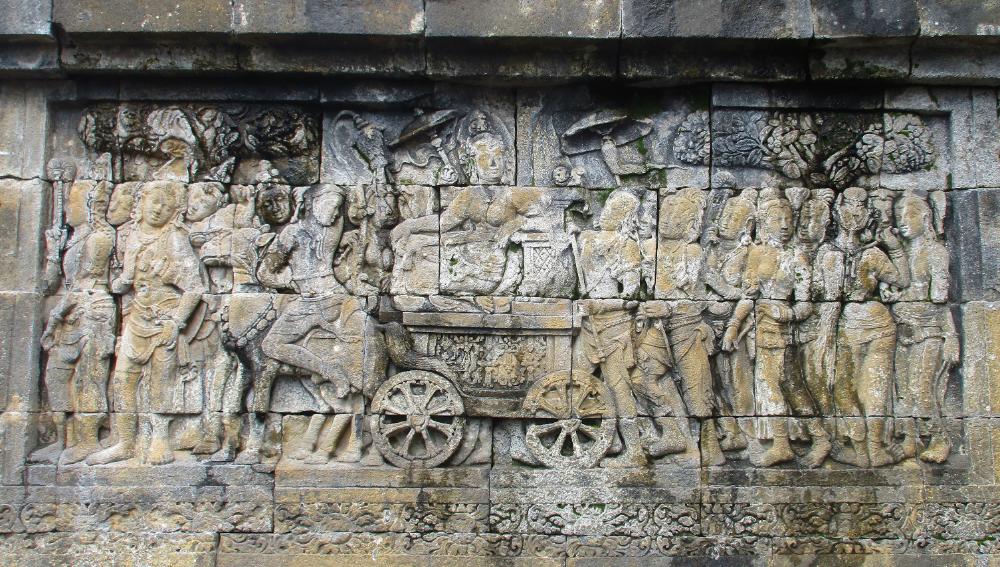
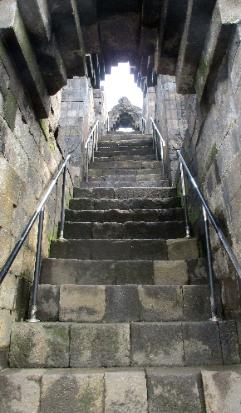
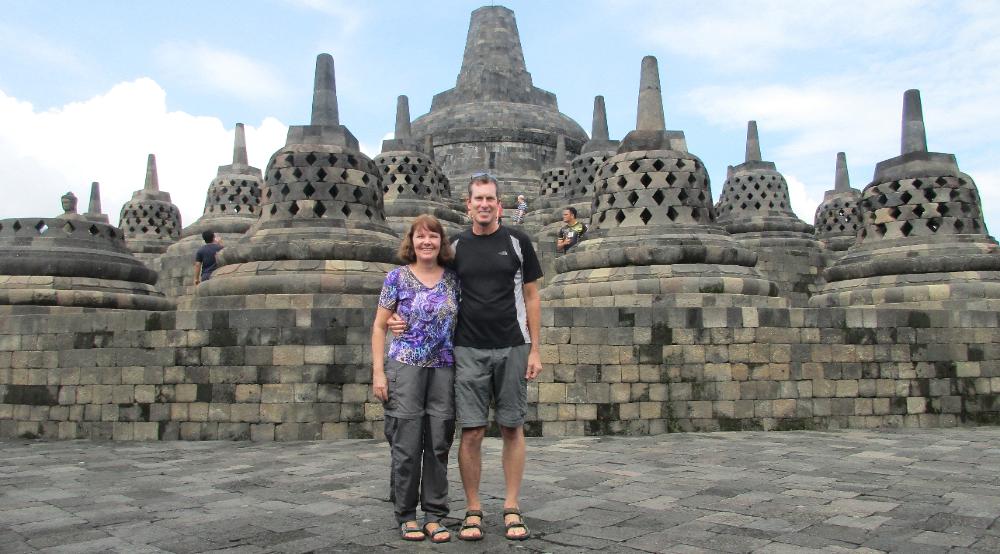
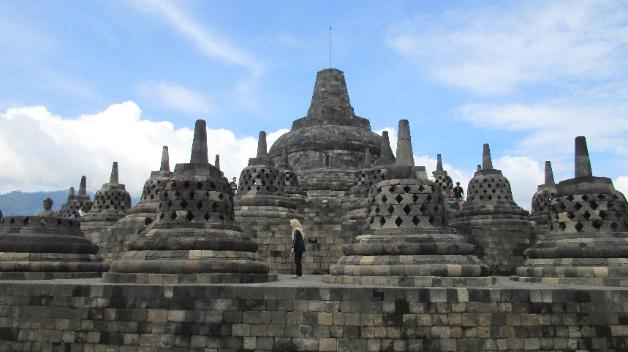
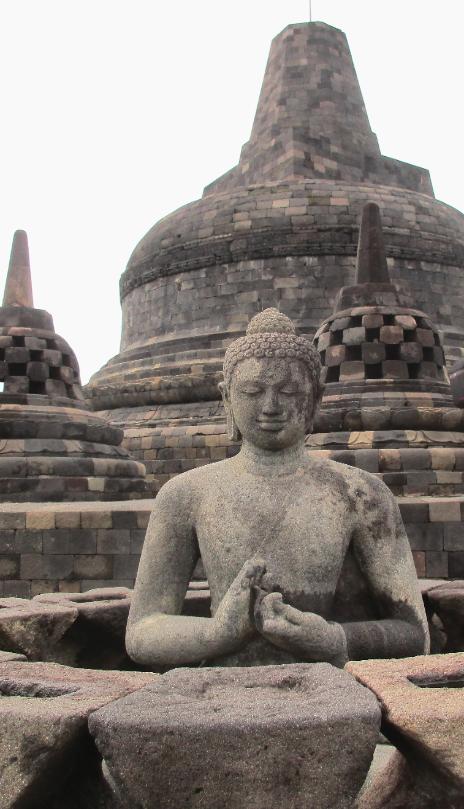
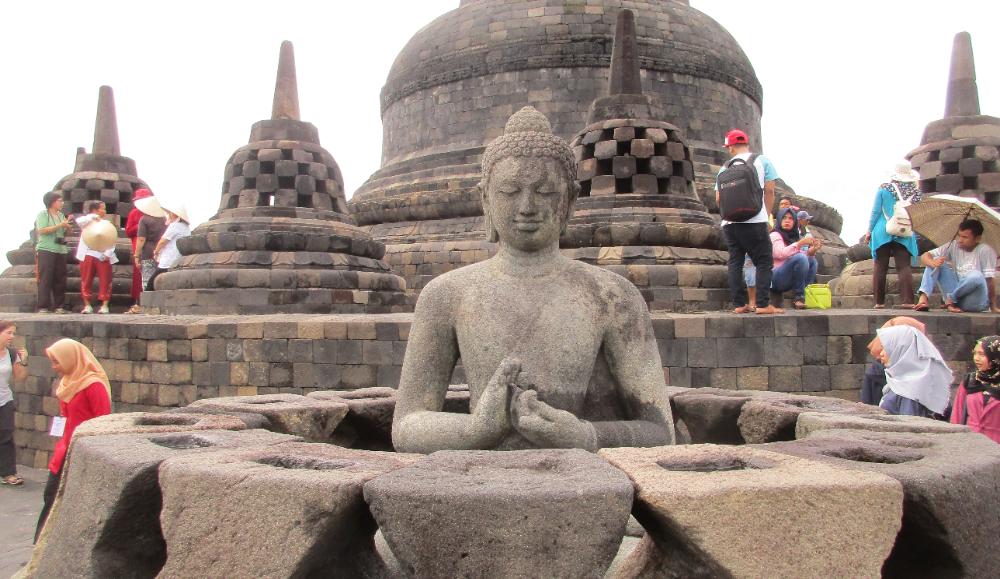
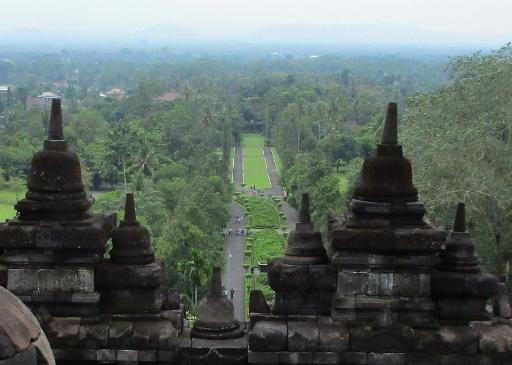
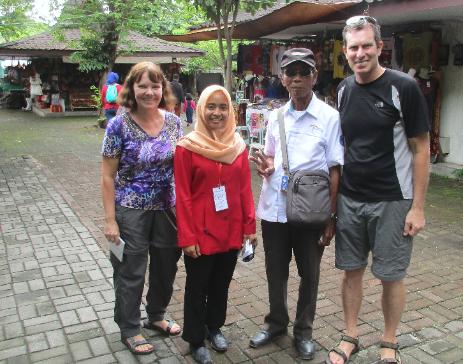
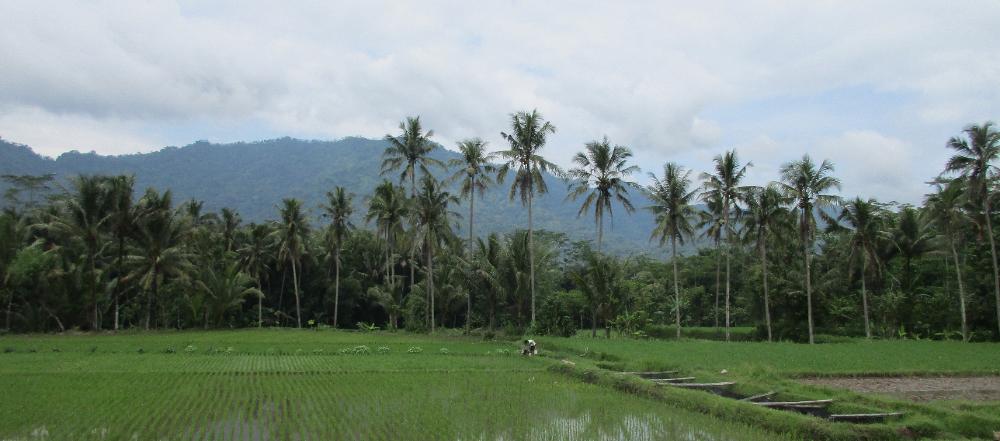
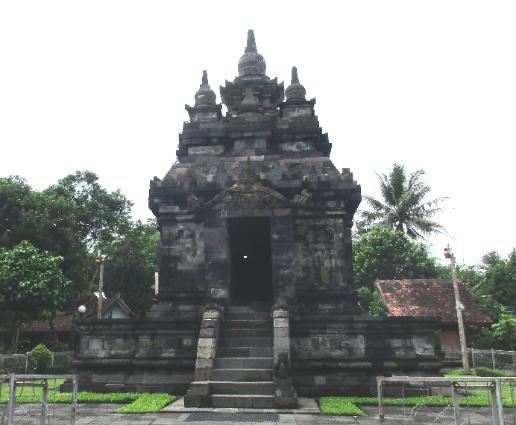
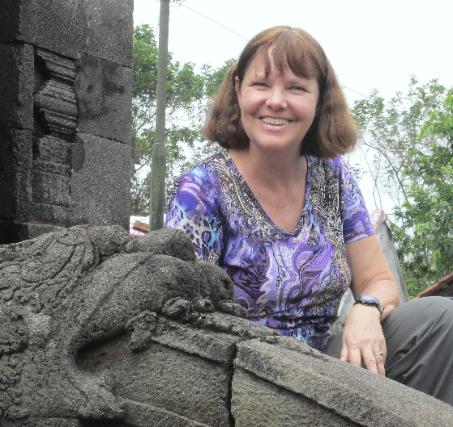
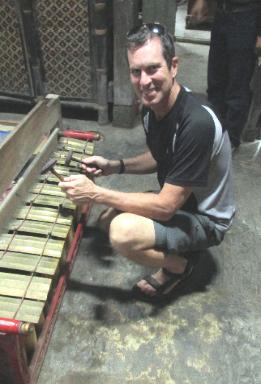
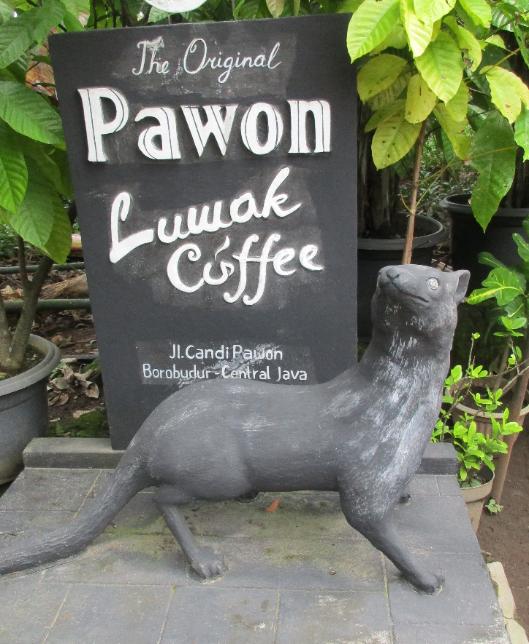
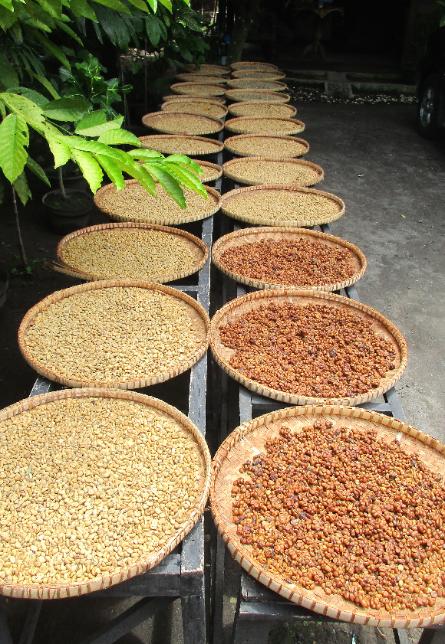
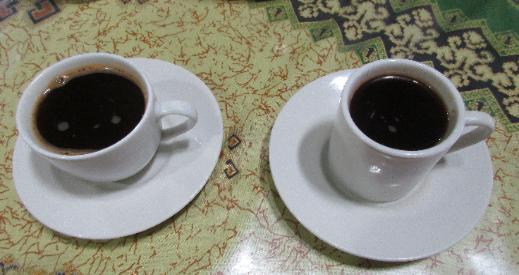
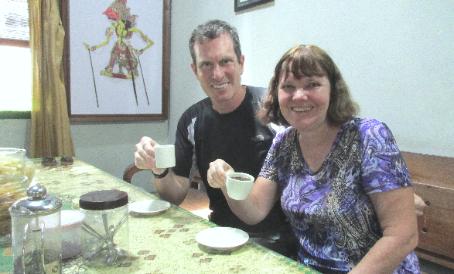
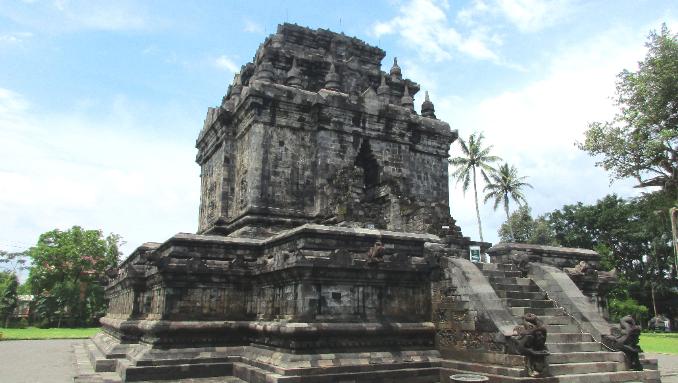
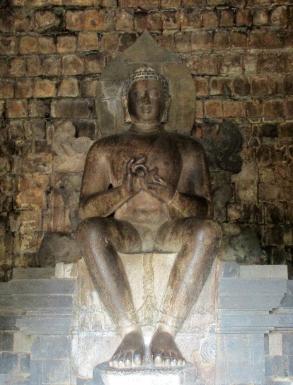
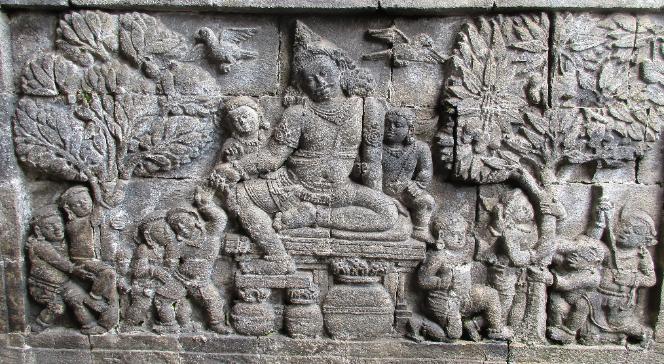
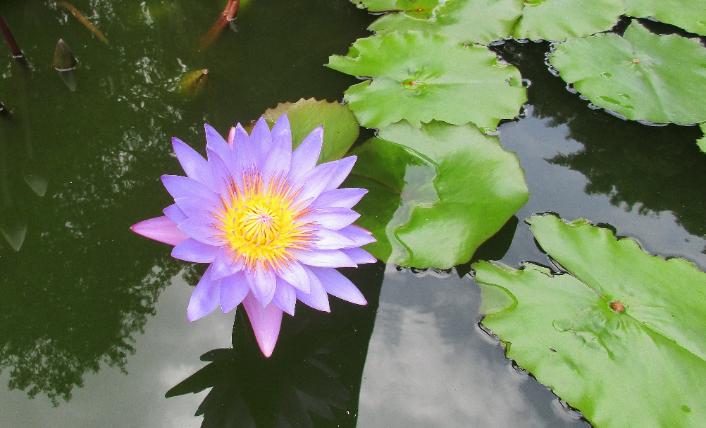
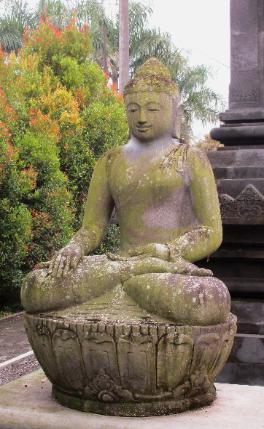
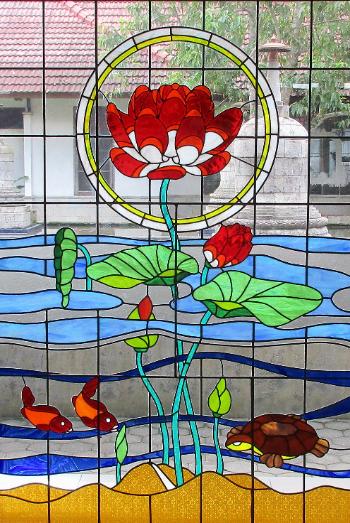
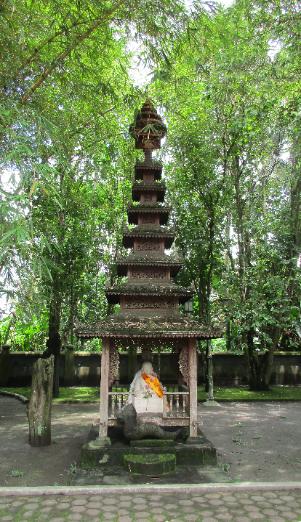
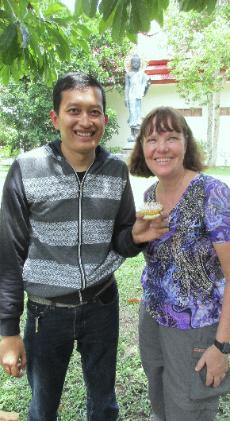
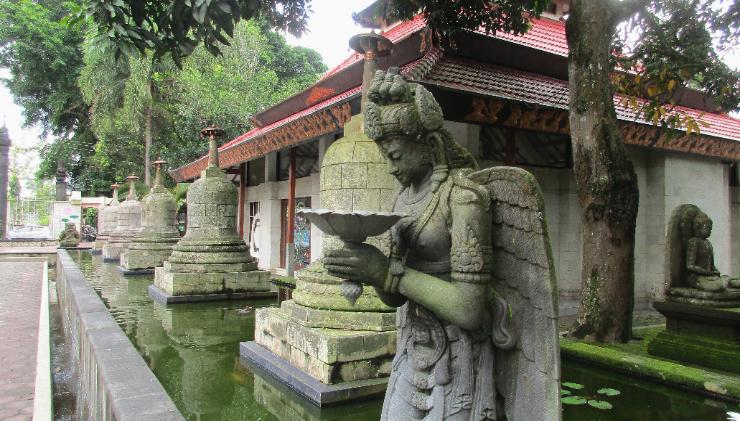
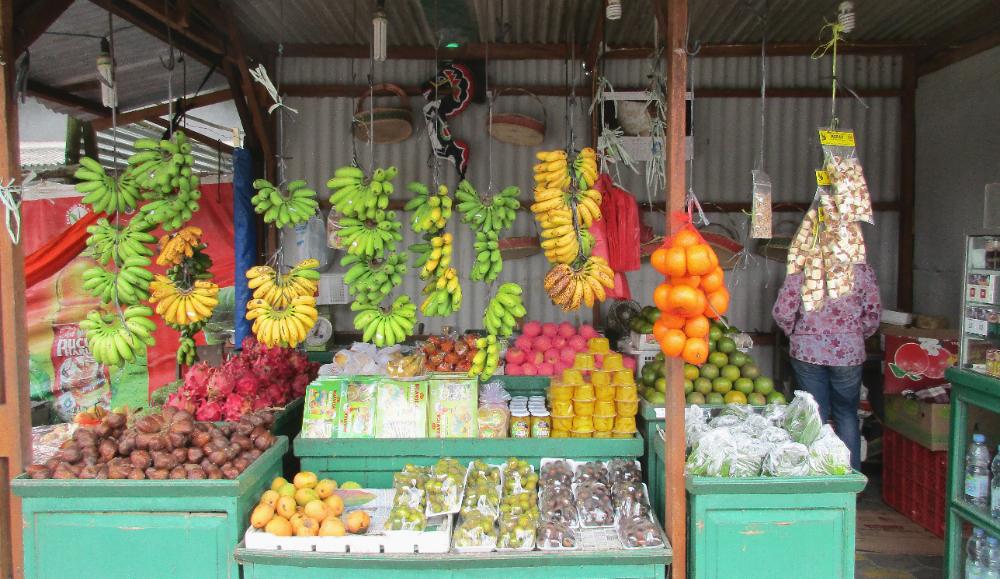
| Borobudur! Built in the 8th and 9th centuries AD in central Java, this is the single most popular tourist attraction in modern day Indonesia |
| Borobudur -- Yogyakarta, Indonesia |
Our main reason for coming to Yogyakarta was
to see Borobudur Temple. This marvelous
place is the largest Buddhist temple on Earth
and one of the greatest Buddhist monuments
in the world. It's only about an hour's drive from
Yogyakarta so it's relatively easy to visit. Some
like to arrive before dawn to watch the sun rise
from the top of the temple, but we opted for a
more normal departure time of 6:30 am. Still,
that got us there in plenty of time to fully enjoy
the temple before the midday heat set in.
We bought a combo ticket for Borobudur and
Prambanan, the two main temples in the area,
for Rp 416,000 (~$31 US) pp. We've learned to
expect high prices (relative to local pricing) at
world-class sights like this. But we figure since
we've flown all the way here, we may as well
see the big sights and not pinch pennies too
tightly! In the big picture it's a small price to pay
to see two great UNESCO World Heritage Sites.
to see Borobudur Temple. This marvelous
place is the largest Buddhist temple on Earth
and one of the greatest Buddhist monuments
in the world. It's only about an hour's drive from
Yogyakarta so it's relatively easy to visit. Some
like to arrive before dawn to watch the sun rise
from the top of the temple, but we opted for a
more normal departure time of 6:30 am. Still,
that got us there in plenty of time to fully enjoy
the temple before the midday heat set in.
We bought a combo ticket for Borobudur and
Prambanan, the two main temples in the area,
for Rp 416,000 (~$31 US) pp. We've learned to
expect high prices (relative to local pricing) at
world-class sights like this. But we figure since
we've flown all the way here, we may as well
see the big sights and not pinch pennies too
tightly! In the big picture it's a small price to pay
to see two great UNESCO World Heritage Sites.
| Excited to get started exploring -- and as you can see behind us, there's plenty to explore here. Borobudur has nine stacked platforms (six square and three circular) topped by a central dome. |
| Here you'll find the largest number of Buddhist bas relief panels in the world -- 2,672 to be exact. But you'll feel relief when we tell you we're only sharing three with you! This one focuses on the origins of Javanese massage. |
| Periodically you'll find large statues of Buddha tucked into niches in the walls. Buddha's pose (i.e., his hand positions) differs depending on which side of the temple you're on -- north, east, south, or west. |
| This is one of our favorites -- and perhaps the most famous at Borobudur. It depicts Queen Maya riding a horse-drawn carriage on her way to Lumbini (Nepal), where she gives birth to Buddha. |
| As you walk through the temple, each panel along the walls tells part of a narrative. If your local guide is anywhere near as thorough as ours was, you'll get quite an education in all things Buddhist before you reach the top. |
| The circular platforms at top feel completely different from the rest of the temple. Here there are no ornate bas reliefs, but rather 72 bell-shaped stupas pierced with diamond-shaped holes. |
| Inside each stupa is a protected Buddha statue! At the very top of the temple is an even bigger stupa pointing skyward. |
| A few of the protective stupas have been removed to let you have a look inside. The Buddha at right is one of the few with an intact nose |
| We love this picture because it shows the Buddha in peaceful meditation despite the tourists milling about -- just what you would expect of Buddha! |
| The view from the top is lovely. We can see why it's such a popular spot for watching the sun rise. |
| Surrounding the temple are beautiful rice paddies fringed with palm trees, with forested hillsides behind. Farmers were hard at work in the fields. |
| We also visited two small historic temples near Borobudur. This is Pawon Temple, a mid-9th century temple. |
| Pausing between temples, we finally got to try real luwak (civet) coffee! This is a big deal, trust us! Coffee beans are ingested and passed through the digestive tract of a civet before being processed into coffee with an extra-smooth taste -- yup, you read that right! The orange-colored beans shown at far right have been "civetized." |
| Luwak coffee is a specialty of Indonesia and costs a small fortune elsewhere, but here it's affordable. We paid Rp 25,000 ($1.75) each for a cup of robusto and a cup of arabica. Both were smooooooth and not at all bitter. Robin even drank hers black, which never happens. But there was quite a bit of sediment at the bottom that we didn't drink! On our way out we even got to pet a real live civet. |
| Our next stop was Mendut Temple, built in the early 9th century -- older even than Borobudur. We liked the feel of this temple with its three big Buddha statues inside. |
| Mendut's outer walls are lovingly adorned with bas reliefs of Boddhisattvas (Buddhist divinities) |
| Our driver and guide, Anton from Alamanda Villa, did a great job showing us around Borobudur -- and the tour only ran us about $30 US. Our final stop was a modern Buddhist temple with lovely landscaping. |
| We love the sense of peace and serenity that can be found at Buddhist monasteries and temples |
| On our way back home, we paused at this perfect little fruit stand. It seems everything grows well in Java's volcano-enriched soil. |
| Borobudur Surrounding Sights |
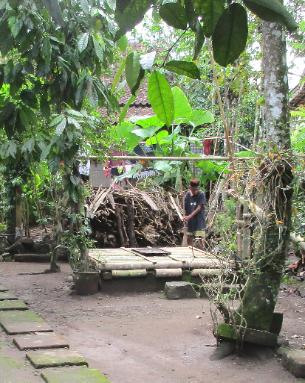
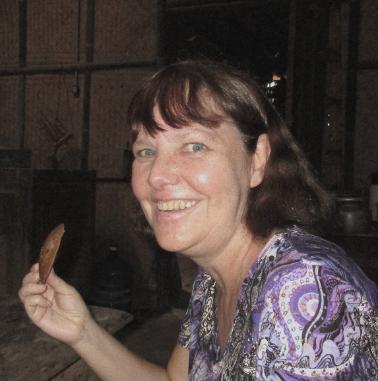
| We stopped at one small farm more or less carved out of the jungle. Here we got to taste coconut sugar (left) and try our hand at playing gamelan music (right). |
| Lotus flowers are a sacred spiritual symbol for Buddhists. Its roots are in muddy water but it rises above the mud to bloom with such beauty. |
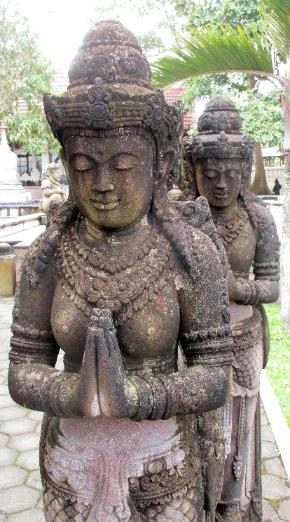
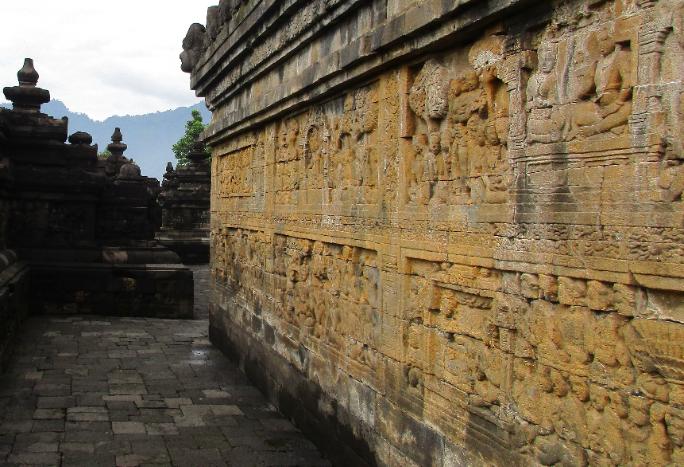
| The bas reliefs cover the walls as you walk along each level, then you climb up to the next level through dramatic gateways like this |
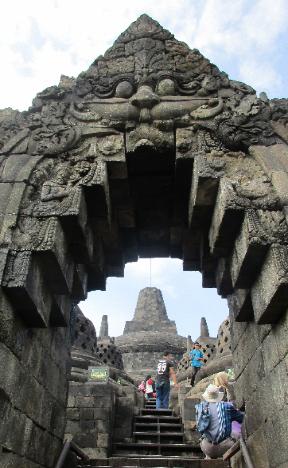
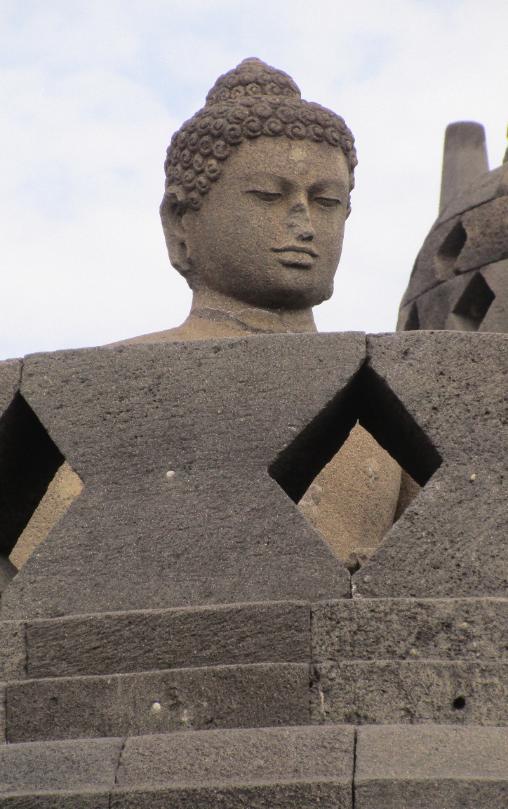
| A steep set of stairs takes you to the topmost platforms |
| Our local guide was 75 years old but still spry enough to make the climb to the top. The young woman is an apprentice guide. |
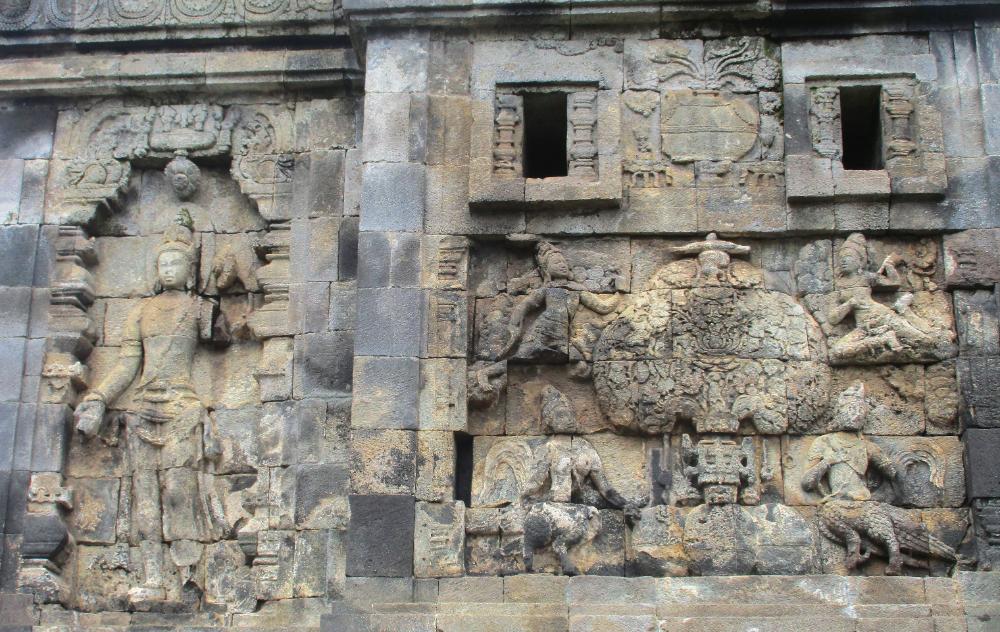
| An exterior wall of Pawon Temple depicts a kalpataru tree,a wish-fulfilling divine tree in Hindu mythology. Throughout the Borobudur area you'll find Hindu elements mixed in with Buddhist motifs. |
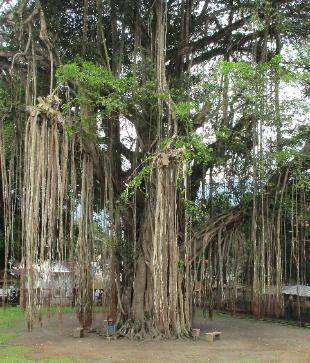
| The huge banyan tree next to the temple adds to the charm of the place |